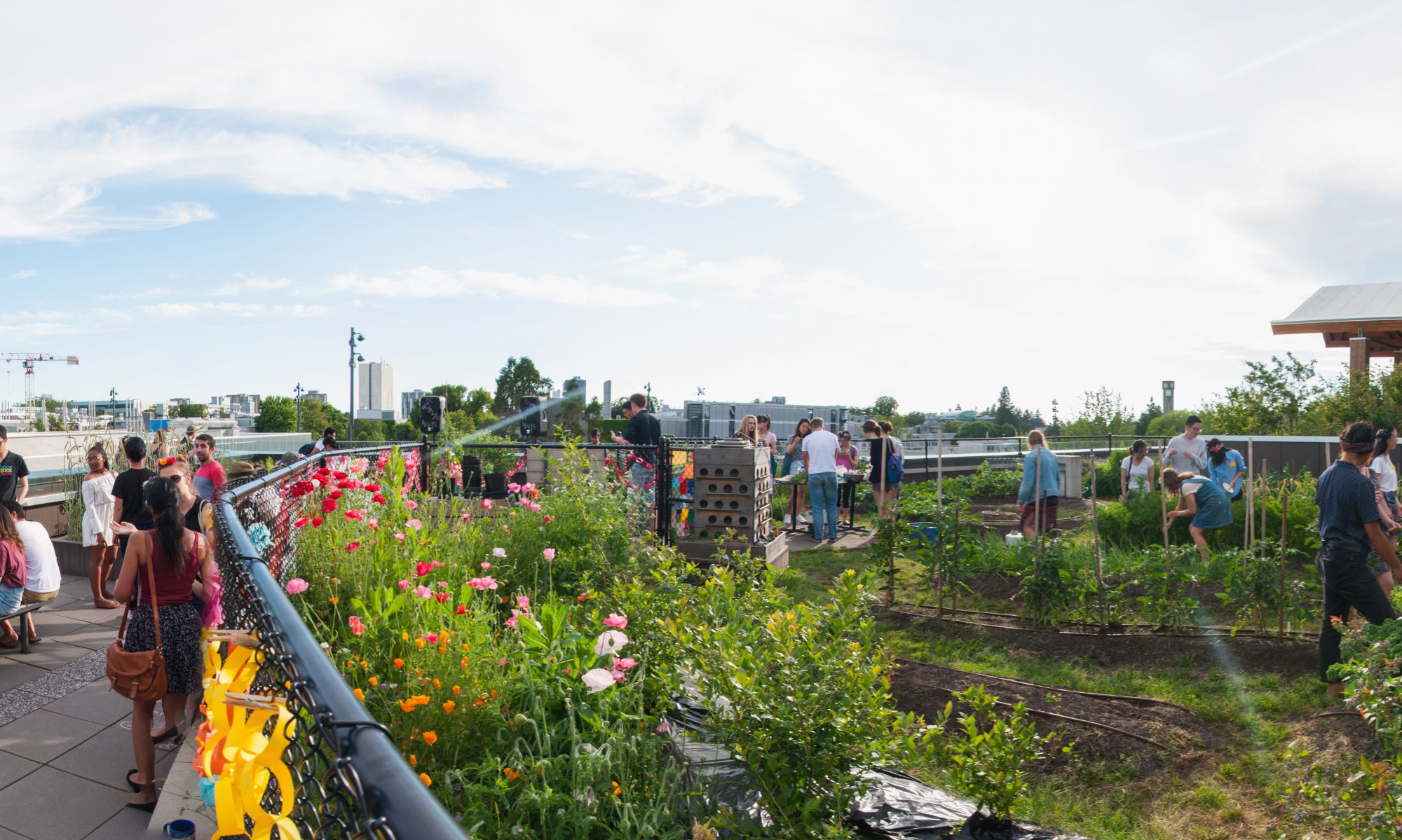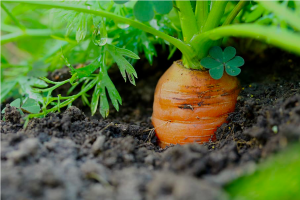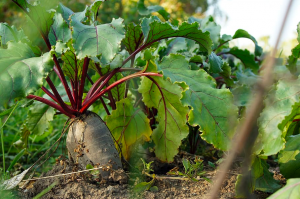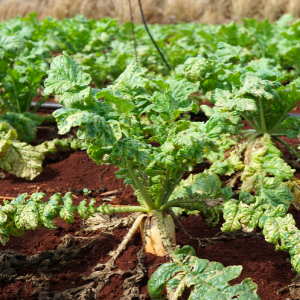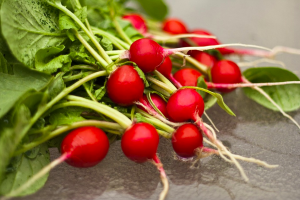Carrots
Carrots are a cool season crop that can be harvested 2 to 4 months after planting. Choose a place with full sun (carrots can also tolerate partial shade) and a soil pH of 6.0 to 6.8. Direct sow your seeds 5mm (¼”) deep as soon as the soil can be worked, about 3 weeks before the last frost date. Carrots do not like to have their roots disturbed, so unlike most vegetables, direct sowing is typically more successful than starting seedlings indoors for transplant. For an ongoing harvest, plant more seeds ever 3 weeks. Use the days to maturity of your chosen variety and the date of your first fall frost to determine how long into the summer to keep planting. Carrot seeds 3 weeks of consistent moisture to germinate. You can water frequently, or cover the bed with a row cover or plank of wood to retain moisture until they germinate. Of course once they germinate you will need to remove the cover so they can get sunlight. When the young plants are 2cm (1″) tall remove the weakest sprouts to thin the plants to 4-10cm (1½-4″) apart. If the roots push above the soil as the carrot grows, hill the soil around the base of the plant to keep the root completely underground. You can amend the soil with compost or coffee grounds to support growth, but avoid high nitrogen fertilizers. They will lead to big bushy tops and tiny, undeveloped carrots. Check the days to maturity on your seed packet to know how long to wait before harvesting your carrots. To harvest, grip the green tops near the base and gently pull up the root. Plant carrots with brussel sprouts, broccoli, chives, leeks, lettuce, onions, peas, peppers, rosemary, or sage, but do not plant them with dill, or potatoes. Carrots planted with tomatoes will have superior taste, but the root growth will be stunted.
Beets
This cool season crop needs full sun and a soil pH between 6.0 and 6.8. Direct sow seeds 1cm (1/2″) deep and 5 to 10 cm (2 to 4″) apart in rows spaced 30 cm (12″) apart 4 weeks after the last spring frost. Allow 5 to 12 days for the seeds to germinate. Crowding will keep the roots small, so when the seedlings are approximately 5 cm (2”) tall, thin them to 8 cm (3″) apart to grow uniformly sized beets. The young beet greens are edible, so save the weaker ones you pull out and enjoy in salads or steamed. Make successive plantings every 3 weeks until 6 weeks before the first fall frost for an ongoing harvest. In zones 9 or warmer, winter crops are often possible. plant the beets in the early fall and harvest them about 2 months later in the winter. To harvest, gently pull the roots up from the leafy tops. Beets will grow well with celery, dill, rosemary, mint, leeks, lettuce, onion, broccoli, brussel sprouts, and cabbage.
Turnips are a cool season crop that can be grown in the spring and fall, but less so during the warm summer months. 2 to 3 weeks before the last frost date, direct sow seeds 6mm to 1cm (¼ – ½”) deep and 2cm (1”) apart. Keep rows 30 to 46cm (12-18”) apart. For a fall crop, sow seeds at least 2 months before the first fall frost. Mix compost into the soil before planting for best results (avoid high nitrogen fertilizers) and allow 8 to 12 days for germination. Once the seedlings are 10cm (4”) tall, thin them to 13cm (5”) apart by removing the weakest sprouts. Your crop will be ready for harvest 45 to 50 days after planting. Try to harvest the spring crop before temperatures get past 27°C (80°F). Turnips will grow well next to cabbage, onion, and peas.
Radishes
Radishes can be planted as a spring and fall crop, but will not grow well during the hot summer months. Work compost into the soil before sowing seeds to help them grow. 5 weeks before the last frost date, direct sow seeds 1 to 2cm (½ – 1”) deep and 2cm (1”) apart. Keep rows 30cm (12”) apart and thin the sprouts to 5cm (2”) apart once they are a week old. Radish greens are edible, so snack on the weaker sprouts as you pull them up. Plant another crop every 10 days for a rolling harvest. Radishes grow quickly, reaching maturity in only 3 weeks, and grow well in containers. Companions plants to radishes include beans, beets, celery, cucumber, lettuce, mint, peas, spinach, squash, and tomatoes. Radishes should not be planted near potatoes.
